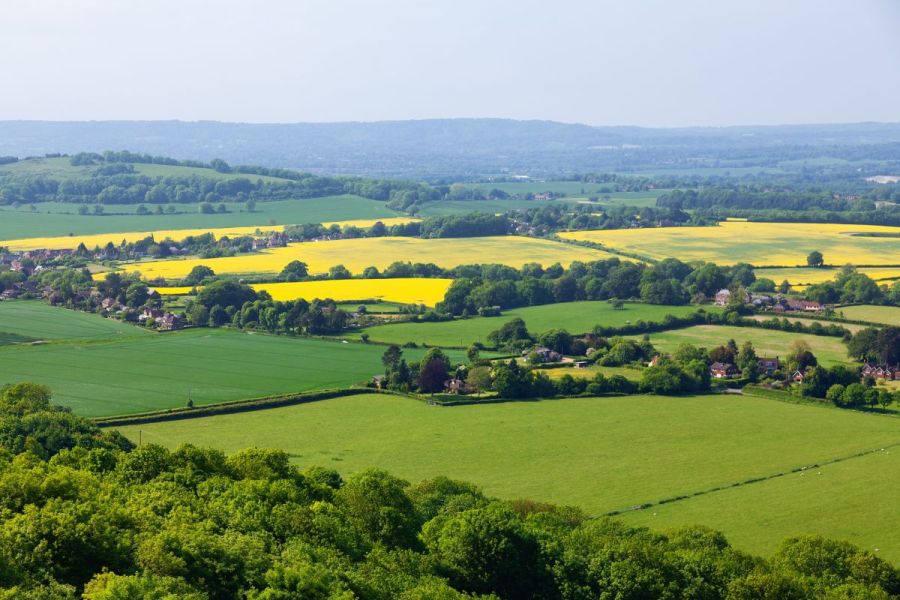Natural capital is much talked about but hard to quantify. CPM explores what the term means, finds out how best to integrate it as part of a farming business and asks why we should all care about it.
“You can only take advantage of these natural capital opportunities if you know what you’ve got in the first place.”
By Lucy de la Pasture
Even though the Environmental Land Management (ELM) scheme has recently been placed ‘on hold’ [at the time of writing], the unrecognized value of nature has been central to a number of prominent government reviews of late.
Natural capital is just one element that’s come to the fore as agricultural policy has turned its focus towards paying farmers public money for public goods and private markets have developed to trade this important asset.
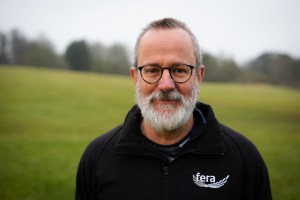
There has been little financial incentive in the past 20-30 years for farmers to really focus their efforts on improving the natural capital value of their land, says Glyn Jones.
According to Glyn Jones, head of plant science at Fera Science, there’s an opportunity to create new revenue streams from the natural capital value of the land.
“Natural capital is a way of describing society’s dependence upon nature for our existence. It reduces greenhouse gases, is a store of carbon, protects areas from flooding, improves air quality and creates good conditions for more biodiversity – and these are all public goods in economic terms.”
He says despite farmers being some of the prime providers of these public goods, there has been little financial incentive in the past 20-30 years for them to really focus their efforts on improving the natural capital value of their land.
“Farmers have been incentivised at a relatively small scale, but all of this is starting to ramp up and new agricultural support schemes are going to have a much bigger focus on natural capital and the environment,” explains Glyn.
“The Sustainable Farming Incentive (SFI), for example, is quite a broad scheme to get lots of farmers investing in environmental projects, and if all those actions are applied properly and in the right location, you’ll start to get improvements in natural capital. It’s ‘a rising tide lifts all boats’ kind of thing.”
Glyn believes farmers will be paid with a mixture of public and private funds for their natural capital work in future, as corporate companies look to the agricultural sector to help them offset their emissions.
“Private sector money will come as businesses – from water companies and developers to banks and insurance companies – start thinking about natural capital and what it means for them,” says Glyn.
“How the public and private funds eventually merge together in a coherent way is still to be determined, but you can only take advantage of these natural capital opportunities if you know what you’ve got in the first place.”
He likens natural capital markets – whether they be in the form of selling carbon or biodiversity credits – to diversification and says farmers should view them as additional income streams for their businesses.
“I’d advise viewing your farm as a portfolio, which can bring in income from natural capital as well as agricultural production.”
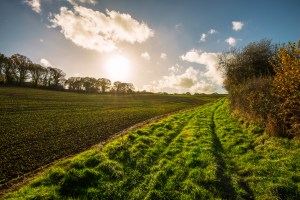
Creating a baseline from which to measure and manage natural capital assets is essential and biodiversity mapping tools can help achieve this.
Glyn acknowledges that diving headfirst into one of the new post-Brexit agri-environment schemes is likely to be daunting for those who haven’t been involved in similar schemes in the past.
“When it comes to making future land-use decisions, it requires an awareness of the range of options available or what’s possible with the land’s assets, as well as considering what’s right for a business in the long-term. As a starting point, I’d advise actively looking for something that to dip a toe into,” he says.
And once the decision has been made to embark on a natural capital journey, Glyn believes creating a baseline from which to measure and manage natural capital assets is essential. It was this belief, and the backdrop of a move towards rewarding farmers for delivering public goods, which led to Fera to creating its Land360 service.
Glyn says the service, which is available in three tiers, is designed to help farmers and landowners harness the opportunities available to them in the emerging natural capital and biodiversity markets. The point of Land360 is to help identify the natural capital on the farm.
“If you don’t know what you’ve got and what you could have, you can’t really try and grab that opportunity.”
The first tier of the service is desk-based and uses remote-sensing and geographic information systems to map out an area of land into different habitat areas, giving each one a score in terms of its carbon storage capacity and biodiversity value, explains Glyn.
“The second tier involves visiting the farm, looking more closely at each of the habitats and rating them as good or poor quality, helping identify any areas for improvement. The third tier models different scenarios on the land to see where there’s scope to monetise its carbon and biodiversity value.”
Glyn acknowledges that the service is more suited to mapping out a larger area of land at the moment, both practically and from a cost perspective, lending itself to estates or a collective of smaller farms.
“Groups of farmers would benefit by coming together to map out their land and identify opportunities to make the most from their natural capital,” he notes.
“You want to be able to know the potential of your land,” says Glyn. “How much carbon could your farm store and how much could you sell it for? How many biodiversity credits could you create on your farm and is there a demand for those credits? It’s those kinds of questions that Land360 can start answering.”
Fixing environmental damage
Passionate about the environment, Suffolk farm manager Glenn Buckingham believes society should pay farmers to repair ecological damage.
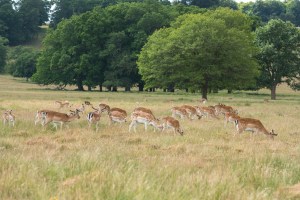
The long-term plan at the Helmingham Estate is to use the mapping to identify good and poor-quality habitats and then work to improve it.
Glenn, who is farm manager at the Helmingham Estate’s 800ha home farm, is using Land360 to map the biodiversity of the whole 2000ha estate. Made up of mainly arable farms, the estate is also home to some livestock in the form of cattle and pigs. The home farm includes 135ha of parkland, which is home to deer and a 70ha block of woodland.
“I’ve fully embraced the thought that ELMs won’t provide sufficient cash for all the things that have to be done to restore biodiversity. Therefore the private markets will come along and wish to invest and/or offset their activities on agricultural land,” says Glenn, who is also a director at the Suffolk Farming and Wildlife Advisory Group (FWAG).
“Knowing that, you then realise there’s a need to know more precisely the natural assets you have.”
He says the whole estate is being assessed using the service and 3000 individual parcels of land or habitat have been identified, including everything from hedgerows and individual fields to ponds and woodland.
“We now have to look at those and verify their quality to build up a picture of how good they are and what condition they’re in,” says Glenn.
“The long-term plan with mapping is that it will identify good and poor-quality habitats and we can then work to improve the habitat or its condition.”
He says the initial mapping exercise cost around £5 per ha and once the full service has been used it will have cost the estate £20-25 per ha.
“We might be able to trade carbon at £30 a tonne but quite what seven species of bats on our farm, or three species of owl or 12 newts per pond are worth, we’re not sure yet. There’s a matrix for biodiversity net gain which planners have to go through, and I imagine we will all engage to learn how it benefits land managers.”
Improving biodiversity at famous North Yorkshire estate
A strong desire to help tackle the twin climate and biodiversity crises is the driving force behind a change in focus at the arable operation at a famous North Yorkshire estate. The 3640ha Castle Howard Estate – famed as the backdrop for many TV programmes including Netflix’s Bridgerton series – was one of the first estates to make use of the tool.
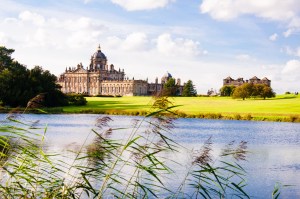
The Castle Howard estate has identified that the most gains can be made by tweaking the arable side of the business.
Castle Howard chief executive Jasper Hasell says the whole estate – including the 920ha home farm – has been mapped and 6000 land parcels, or habitats, were identified. He says the key driver for understanding the estate’s biodiversity and natural capital is a desire from its owners – the Howard family – to “do their bit”.
“The Howard family are passionate about the environment,” explains Jasper. “They are very aware that we’re facing a climate and biodiversity emergency and being stewards of such a large area of land they feel very responsible and driven to do their bit.”
He says the initial mapping of the estate revealed a huge variation in the biodiversity scores for the home farm’s woodland and grassland areas, when compared with the arable ground.
“That was quite surprising because we realised, for example, that a small intervention on the arable side can make a big difference to the biodiversity numbers and carbon sequestration,” says Jasper. “That led us to focus on that.”
Areas of focus for the arable operation at Castle Howard include assessing what parts of fields are profitable, which are marginal, and which struggle to break even. “Where it isn’t profitable, we’re asking is there a better use of that land?” explains Jasper.
“That might be on the edges or patches of fields, so we’re looking at farming the most efficient rectangle in a funny shaped field, for example.”
Other focus areas include more use of precision agriculture equipment for fertiliser applications and deploying weather stations around the estate for more accurate crop pest and disease forecasting.
Jasper adds: “We’re also looking at more extensive use of cover cropping to stop soil degradation and carbon loss through run-off, exploring crops that are less intensive in terms of turning the soil and bring in very heavy machinery, and we’re exploring the use of agroforestry.
“We’re trialling different cultivation techniques too, to maintain ground cover all year round – from cover crop to cash crop and back into cover crop. This gives us the opportunity to re-integrate livestock into the rotation.”
Data from Land360 has been used to help the estate apply for funding from the Nature-based Solutions for Climate grant programme, and the next step in Castle Howard’s wider biodiversity-boosting journey will be an estate-wide soil sampling programme. “It’s quite an exciting time,” adds Jasper.
Why should we care about natural capital and biodiversity?
It’s in the interests of all farmers to take stock of the natural capital value of their land and do all they can to restore and improve it, according to Suffolk FWAG chief executive, Anna Beames.
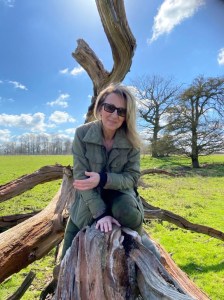
At a farm level, it’s important to prioritise your business aspirations so that your natural capital investments work in tandem with your farm objectives, according to Anna Beames.
Against the backdrop of emissions reduction targets and a drive to restore and improve the natural environment, Anna believes farmers have an opportunity to be part of the solution.
“Farming is the only sector in the world that can reduce carbon emissions and sequester them because it owns the land,” she says. “Historically, natural capital on-farm had no value at all, so it’s about taking a new perspective. Harnessing natural capital is a business decision and should be respected as such.”
She encouraged all farmers to spend the next few years understanding the state of their farm’s natural capital, with a tool such as Fera’s service. Anna has been involved with Land360’s use at the Helmingham Estate in Suffolk and is hopeful the service can be rolled out to Suffolk FWAG members to use collectively as a group.
“It’s a positive management tool to capture your natural capital assets,” explains Anna. “It allows you to create a baseline where you can measure change from.
“If you have very low natural capital, you can get busy creating more, while if you have legacies like old ponds, it highlights where you can get busy restoring that natural capital value. At a farm level, it’s important to prioritise your business aspirations so that your natural capital investments work in tandem with your farm objectives.
“For now, my advice is to spend at least the next two or three years understanding natural capital value, building and investing in it,” she says.
This article was taken from the latest issue of CPM. For more articles like this, subscribe here.

